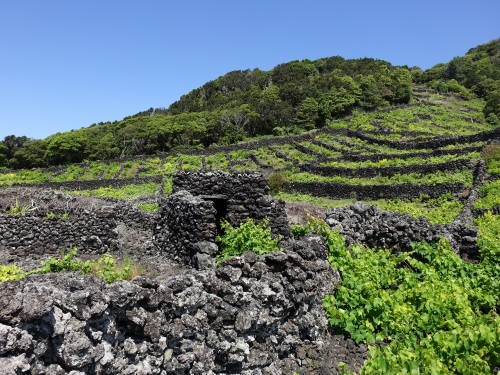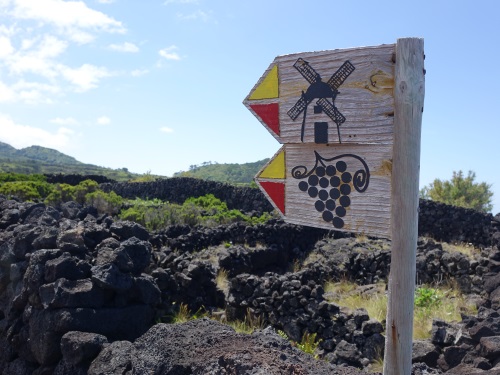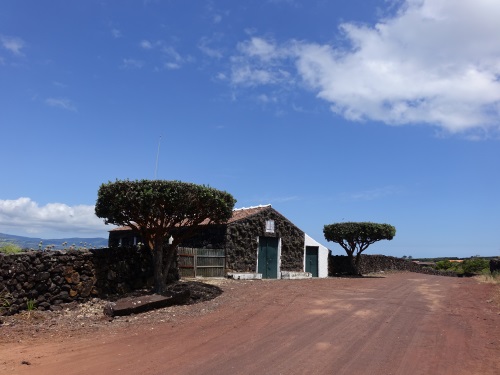Blog WHS Visits
WHS #635: Pico Island
Out of the 9 main islands of the Azores, Pico Island may be the prettiest one. Its lush green flora strongly contrasts with the abundant black lava stone that is present along its coasts. Its iconic stratovolcano peak is a landmark in the Azores part of the Atlantic Ocean. And there’s a WHS as well: the Vineyard Landscape of Pico Island comprises two narrow strips of land along the coast, where grapes are grown on a bottom of solid lava. Within stone fences, grapes were traditionally grown between the rocks of the lava stone - without soil. This part of Pico was unsuitable for ordinary farming.

The northern part of this WHS lies right next to the airport of Pico, so it’s a really nice welcome when you fly in. The plots neatly divided by walls of basaltic blocks are a memorable sight. I stayed for 3 nights near the other stretch of vineyards though, at Madalena. There’s a great walk through the WHS landscape that you can do in that area. It starts in Porto Calhau. I did not rent a car on Pico (also not on Terceira), and got around easily by hiking, one-way taxi rides and the occasional public bus. To get to Porto Calhau I took a taxi. The driver was very much aware about the starting point of the hike, it’s very popular and well-signposted.
The walk starts on the paved road along the coast. It's a minor road, I encountered little traffic except for some day trippers who were not deterred by the sharp rocks to swim in the sea or lay down on the rocks sunbathing. The hiking route is 6.9 kilometres long and takes 2 hours. It is fairly flat (an uncommon pleasure at the Azores), only after a kilometre or so you have to do a half-loop around a hill where the road goes up and down. In this zone there is a lot of Azorean heather, and I noticed the first plants in lots separated by walls of loose stones. That way they suffer less from the influence of sea and wind.

After tackling the hill, one arrives at an enormous open plain. It is full of gray stonewalled fields (currais) in which the vines lie. There is no shelter here, at least not for hikers. Although there was a nice breeze, I felt the sun gradually starting to burn my face, arms and calves. I wonder how tough it will be when it is your job to pick the grapes here. Huts made of loose stone are available now and then to protect the farmers and the pickers. Unfortunately for the hikers, I found the entrance gates to them closed.
Turning off from the paved road, the trail continues on a gravel road first and later on a narrow stone path through the 'fields'. I did not meet any other hikers, nor farmers - I wonder what the right season is, but I did not find any grapes on the plants that I saw. At the end of the walk you will approach a bright red windmill, a fairly new construction built after a traditional model. After that it's only a short walk to the village of Madalena. Conveniently the trail ends at a seafood restaurant.

At only 20 ‘ticks’ from our community members, this is still a quite obscure WHS at the same level of difficulty as Mausoleum of Khoja Ahmed Yasawi , Caral Supe or the Pyu Ancient Cities. I enjoyed my 3 days on Pico, although like the rest of the Azores it is a bit sedate and old-fashioned. Good if you’re looking for some quiet days, less so if you’re an avid traveller that wants to see and do something different every day.
Els - 15 July 2017